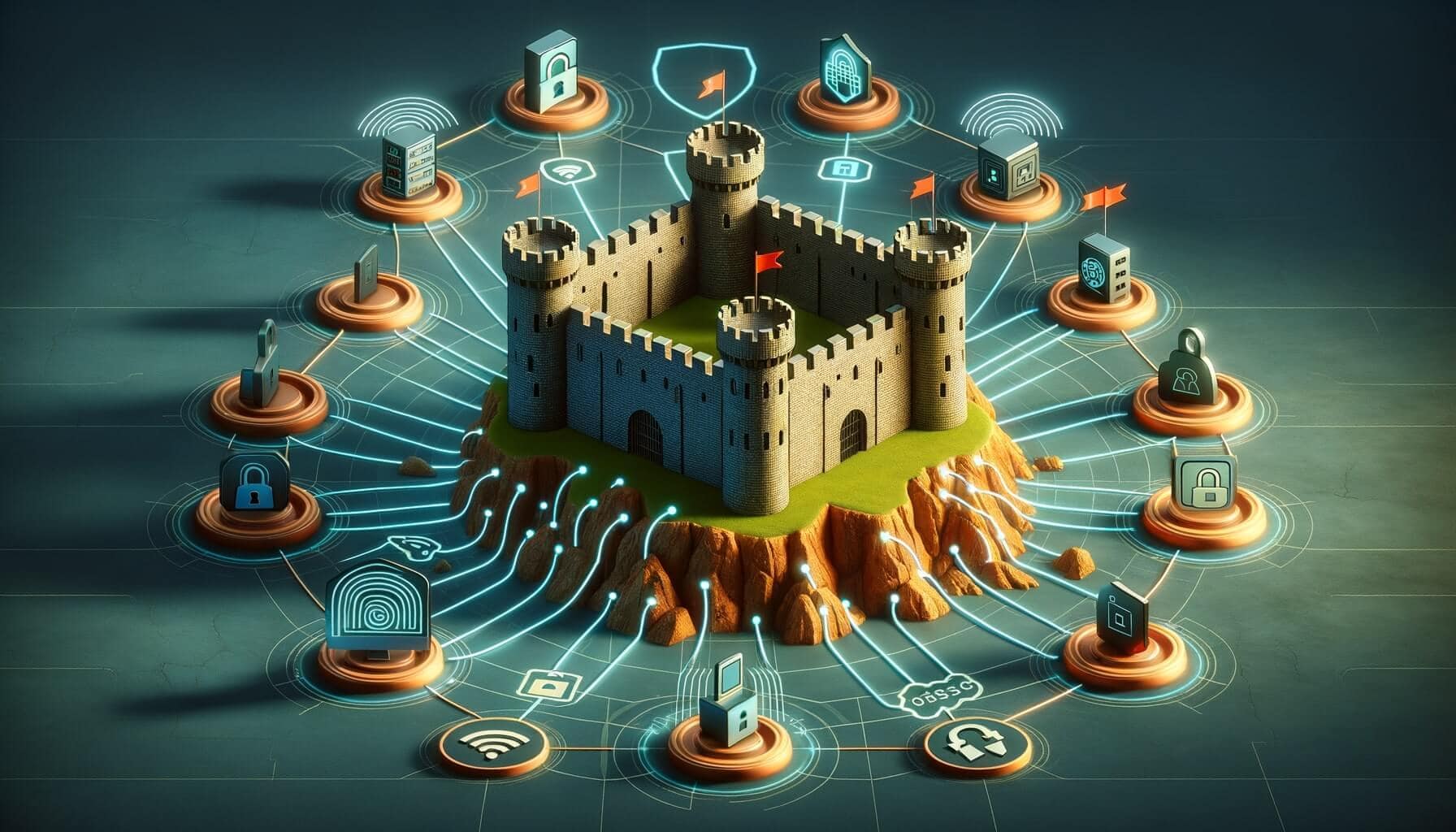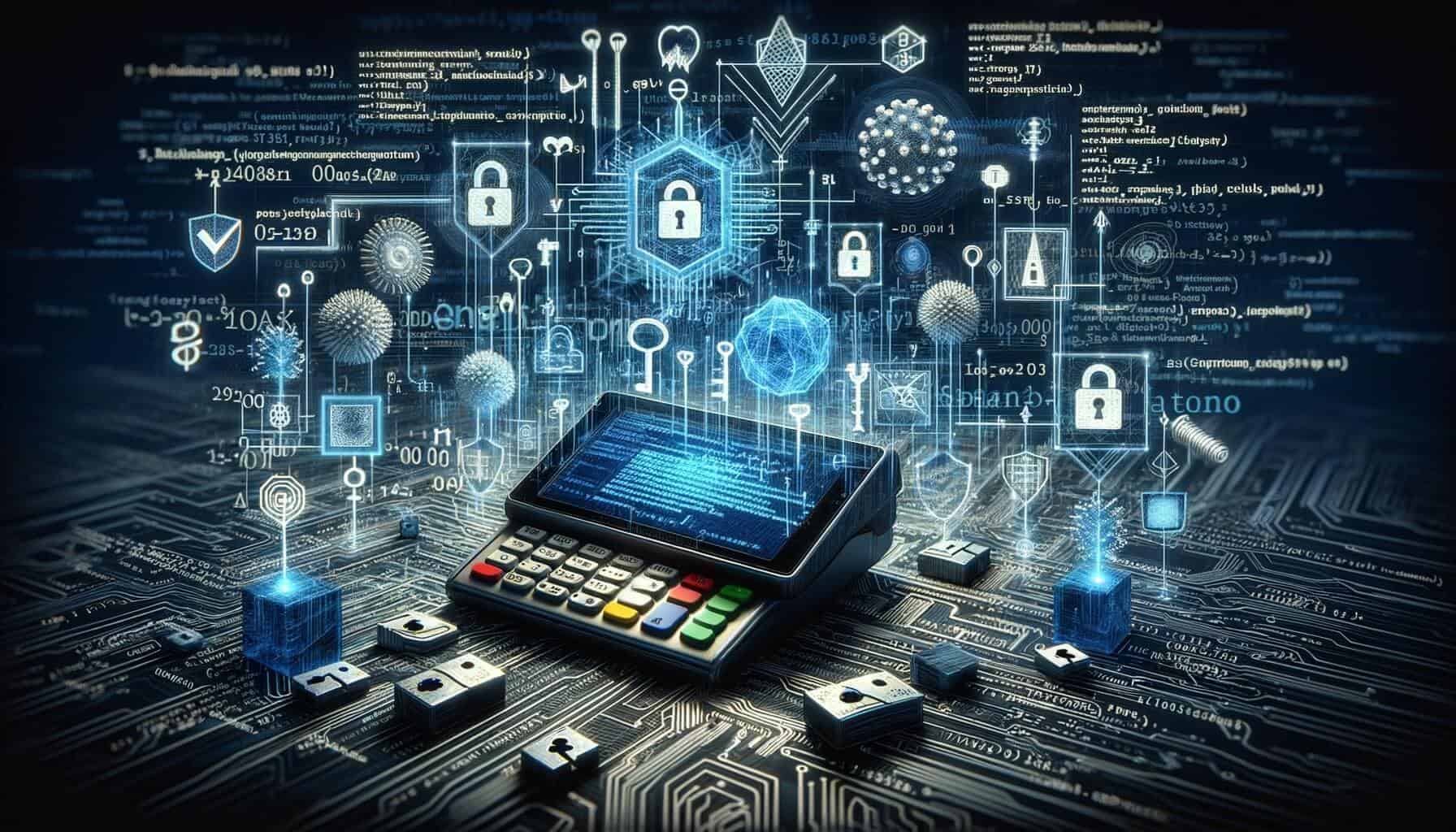
By alphacardprocess April 5, 2025
In today’s digital age, the security of point-of-sale (POS) systems has become a paramount concern for businesses of all sizes. With the increasing prevalence of cyberattacks and data breaches, it is crucial for organizations to implement robust security measures to protect sensitive customer information and maintain the trust of their clientele.
This article will delve into the various security features that can be employed to safeguard POS systems, including firewalls, encryption, tokenization, multi-factor authentication, software updates, network segmentation, intrusion detection and prevention systems, and physical security measures.
Understanding the Importance of Firewalls in POS Systems

Firewalls play a crucial role in securing POS systems by acting as a barrier between the internal network and external threats. A firewall is a network security device that monitors and filters incoming and outgoing network traffic based on predetermined security rules. It acts as a gatekeeper, allowing only authorized traffic to pass through while blocking malicious attempts to access the system.
One of the primary benefits of using a firewall in a POS environment is the ability to control and restrict network access. By defining specific rules and policies, businesses can ensure that only authorized devices and users can connect to the POS system. This helps prevent unauthorized access and reduces the risk of data breaches.
Firewalls also provide protection against common cyber threats such as malware, viruses, and ransomware. They inspect network traffic in real-time, identifying and blocking any suspicious or malicious activity. This proactive approach helps prevent malware from infiltrating the system and compromising sensitive customer data.
Furthermore, firewalls can be configured to log and monitor network traffic, providing valuable insights into potential security breaches. By analyzing these logs, businesses can identify patterns or anomalies that may indicate a security incident and take appropriate action to mitigate the risk.
Exploring Encryption Techniques for Enhanced POS Security

Encryption is another critical security feature that can significantly enhance the protection of POS systems. Encryption is the process of converting data into a format that is unreadable to unauthorized individuals. It ensures that even if an attacker gains access to the data, they cannot decipher it without the encryption key.
In the context of POS systems, encryption is primarily used to protect payment card data during transmission and storage. When a customer makes a payment, their card information is encrypted before being transmitted over the network. This ensures that even if the data is intercepted, it remains unreadable and unusable to attackers.
There are two main types of encryption used in POS systems: symmetric encryption and asymmetric encryption. Symmetric encryption uses a single key to both encrypt and decrypt the data. This key must be securely shared between the sender and the recipient. Asymmetric encryption, on the other hand, uses a pair of keys: a public key for encryption and a private key for decryption. The public key can be freely distributed, while the private key must be kept secret.
To ensure the highest level of security, businesses should implement strong encryption algorithms and protocols, such as Advanced Encryption Standard (AES) and Transport Layer Security (TLS). These industry-standard encryption methods provide robust protection against unauthorized access and data breaches.
The Role of Tokenization in Protecting Payment Data

Tokenization is a technique that adds an extra layer of security to POS systems by replacing sensitive payment card data with a unique identifier called a token. When a customer makes a payment, their card information is securely stored in a tokenization system. The POS system then uses the token for subsequent transactions, eliminating the need to store the actual card data.
By using tokens instead of actual card data, businesses can significantly reduce the risk of data breaches. Even if an attacker gains access to the tokenized data, they cannot reverse-engineer it to obtain the original card information. This provides an additional level of protection for both businesses and customers.
Implementing Multi-factor Authentication for Secure POS Transactions

Multi-factor authentication (MFA) is a security measure that requires users to provide multiple forms of identification before accessing a system or performing a transaction. It adds an extra layer of protection by combining something the user knows (e.g., a password), something the user has (e.g., a mobile device), and something the user is (e.g., a fingerprint).
In the context of POS systems, MFA can help prevent unauthorized access and protect against stolen credentials. By requiring users to provide additional authentication factors, businesses can ensure that only authorized individuals can access the system and perform transactions.
There are several MFA methods that can be used in POS environments, including one-time passwords (OTPs), biometric authentication (e.g., fingerprint or facial recognition), and hardware tokens. Businesses should choose the MFA method that best suits their needs and provides the highest level of security.
Strengthening POS Security with Regular Software Updates and Patches
Regular software updates and patches are essential for maintaining the security of POS systems. Software vendors regularly release updates to address security vulnerabilities and fix bugs that could be exploited by attackers. By promptly installing these updates, businesses can ensure that their POS systems are protected against the latest threats.
One of the primary reasons why software updates are crucial for POS security is the discovery of new vulnerabilities. As cybercriminals continuously evolve their tactics, new vulnerabilities are discovered, and software vendors respond by releasing patches to address these vulnerabilities. Failing to install these patches leaves the system exposed to potential attacks.
Additionally, software updates often include new security features and enhancements that can further strengthen the security of POS systems. By keeping the software up to date, businesses can take advantage of these improvements and ensure that their systems are equipped with the latest security measures.
Best Practices for Network Segmentation in POS Environments
Network segmentation is a security practice that involves dividing a network into smaller, isolated segments to limit the impact of a security breach. In the context of POS systems, network segmentation can help contain an attack and prevent unauthorized access to critical systems and data.
One of the primary benefits of network segmentation is the ability to isolate the POS system from other parts of the network. By creating a separate network segment for the POS system, businesses can limit the potential attack surface and reduce the risk of lateral movement by attackers.
To effectively implement network segmentation, businesses should follow best practices such as using separate VLANs (Virtual Local Area Networks) for different network segments, implementing access control lists (ACLs) to control traffic between segments, and regularly monitoring and auditing network traffic.
Leveraging Intrusion Detection and Prevention Systems for POS Security
Intrusion detection and prevention systems (IDPS) are security tools that monitor network traffic and detect and prevent unauthorized access and malicious activities. They analyze network packets in real-time, looking for patterns or signatures that indicate a potential security breach.
In the context of POS systems, IDPS can play a crucial role in detecting and mitigating attacks. They can identify and block suspicious network traffic, such as port scanning or brute-force login attempts, before they can compromise the system.
IDPS can be deployed as standalone appliances or as software solutions integrated into the network infrastructure. They should be configured to generate alerts and notifications when potential security incidents are detected, allowing businesses to take immediate action to mitigate the risk.
Ensuring Physical Security of POS Devices and Terminals
While much of the focus on POS security is on digital threats, it is essential not to overlook the physical security of POS devices and terminals. Physical security measures are crucial to prevent unauthorized access, tampering, or theft of POS equipment.
One of the fundamental physical security measures for POS devices is the use of secure mounting and locking mechanisms. This ensures that the devices are securely attached to the counter or wall and cannot be easily removed or tampered with.
Additionally, businesses should implement access controls to restrict physical access to the POS devices. This can include measures such as keycard or biometric authentication to enter the area where the devices are located.
Addressing Common FAQs about POS Security Features
Q1: What are the potential consequences of a POS system breach?
A: A POS system breach can have severe consequences for businesses, including financial losses, damage to reputation, legal liabilities, and loss of customer trust. It can result in the theft of sensitive customer data, such as credit card information, which can be used for fraudulent activities or sold on the dark web.
Q2: How often should software updates and patches be applied to POS systems?
A: Software updates and patches should be applied as soon as they become available. Businesses should establish a regular schedule for updating their POS software and ensure that all devices are promptly updated to protect against the latest threats.
Q3: Can encryption be bypassed by skilled hackers?
A: While encryption provides a high level of security, it is not foolproof. Skilled hackers may attempt to bypass encryption by exploiting vulnerabilities in the implementation or by using advanced techniques such as brute-force attacks. However, implementing strong encryption algorithms and keeping them up to date significantly reduces the risk of successful decryption.
Q4: How does tokenization differ from encryption?
A: Tokenization and encryption serve different purposes in securing payment data. Encryption converts sensitive data into an unreadable format, while tokenization replaces the data with a randomly generated token. Encryption is reversible, meaning the data can be decrypted back into its original form, while tokenization is irreversible, as the tokens have no intrinsic value and cannot be reverse-engineered.
Q5: What are the key benefits of network segmentation in POS environments?
A: Network segmentation provides several benefits in POS environments. It limits the potential damage caused by a breach by isolating the POS system from other parts of the network. It also reduces the attack surface by restricting access to sensitive data and resources, making it more difficult for hackers to gain unauthorized access.
Conclusion
In conclusion, securing POS systems is of utmost importance in today’s digital landscape. By implementing a comprehensive set of security features, businesses can protect sensitive customer information, prevent data breaches, and maintain the trust of their clientele. Firewalls, encryption, tokenization, multi-factor authentication, software updates, network segmentation, intrusion detection and prevention systems, and physical security measures all play a crucial role in safeguarding POS systems. By following best practices and staying vigilant, businesses can ensure the security and integrity of their POS environments.